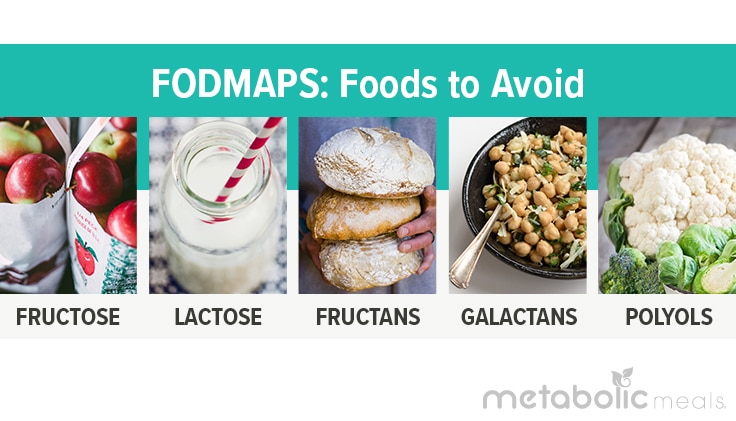ARTICLE AT A GLANCE
Irritable bowel syndrome is a somewhat catchall phrase for a variety of digestive issues. It affects an estimated 10 to 15 percent of adults in the United States to varying degrees. The causes of the syndrome differ for everyone, but for most, the specific nutrients they consume play a significant role in their condition.
Experts can’t point to a specific cause of IBS, but several factors contribute to its development. For instance, irregular muscle contractions or nerve signals can lead to under- or overreactions in the intestine. Inflammation, infection, and changes in the gut’s microflora, or healthy bacteria, can also cause severe discomfort.
Because IBS typically affects the large intestine, those symptoms often include bloating, abnormal gas, abdominal pain, cramping, diarrhea, constipation, and similar digestive complications. While the causes and symptoms might vary, one thing is usually true for all cases of IBS: It’s determined by the health and landscape of the gut at any given moment.
That means nutrition plays a massive role in managing the risks of IBS or the condition itself, if it develops. Proper nutrition, such as a low-FODMAP diet, can help control inflammatory flare-ups as well as heal damaged intestinal tissue.
What Are FODMAPs, and Why Keep Them Low?
FODMAP stands for fermentable oligosaccharides, disaccharides, monosaccharides, and polyols, which are short-chain carbohydrates and sugar alcohols. The human body has trouble digesting these complex carbs, and that trouble is often a leading contributor to IBS symptoms.
The idea to severely limit FODMAPs to relieve irritated bowel symptoms was first realized at Monash University, a public research school in Melbourne, Australia. Researchers found that most people who suffer from IBS have highly adverse reactions to one or more common FODMAPs and that limiting these carbs helped alleviate them.
To be clear, most people are not highly sensitive to all of these fermentable carbs, and a low-FODMAP diet isn’t meant to completely cut them out long-term. If your doctor or nutritionist suggests a low-FODMAP diet, the goal is actually to identify which of these carbs your body has serious trouble digesting and how much of it you can consume before irritation begins. From there, you can tailor your long-term diet to match your needs.
How Does the Diet Work?
In several high-quality clinical trials, a low-FODMAP approach helped improve symptoms in up to 70 percent of people suffering from IBS. It worked in so many study participants because it was tailored specifically to each person’s unique needs by a team of nutritionists and health specialists.
The diet works in phases, the first of which involves restricting all high-FODMAP foods for three to eight weeks. The full list of foods is exhaustive, but the most common irritant saccharides and polyols include fructose (apples and blackberries), lactose (dairy products), fructans (grains, garlic, and onions), and galactans (legumes).
After you restrict these foods, your IBS symptoms should begin to subside. Once they do, you can enter the second phase of experimental reintroduction. Your nutritionist will help you reintroduce specific types and amounts of FODMAPs into your diet to gauge which ones spark an adverse reaction.
The third and final phase of the plan is to modify your diet according to phase two’s results. You know which specific types of FODMAPs irritate your digestive system and to what degree. Now, you can create a meal plan that avoids them while still providing you with all the minerals and nutrients you need.
Oven Roasted Turkey Breast with Savory Herb Gravy and Smashed Sweet Potatoes: Low-FODMAP and rich in gut-healing minerals and collagen
Steps for Low-FODMAP Success
The results of various studies hold promise for the future success of the low-FODMAP approach. However, it is still a fairly new concept. If you’re considering trying the diet to help relieve your symptoms, keep these three things in mind:
1. Get an accurate diagnosis first.
IBS can be a blanket term for several gut issues, so it’s important to get an accurate diagnosis before you try to treat yours. Most importantly, work with your physician to test for existing co-infections such as small intestinal bacterial overgrowth, parasites, dysbiosis, Crohn’s disease, colitis, and more. If you decide to start a low-FODMAP diet, collaborate with your physician or nutritionist through each phase of the diet.
2. Do your research.
Beginning a low-FODMAP diet is a highly involved process, so be sure you understand the time and effort you’ll need to commit to it. Buy a low-FODMAP cookbook, and print a list of approved foods to carry with you at all times. Also, remember that the reintroduction phase will involve returning symptoms as you figure out which foods need to be permanently cut from your diet. You should plan accordingly.
3. Make it part of a larger gut-healing strategy.
While nutrition is important, it isn’t the only factor in your IBS. Removing inflammatory foods like FODMAPs helps significantly, but your larger gut-healing strategy should also include eating enough nutrient-dense foods and reinoculating your gut with probiotics. Proper supplementation will heal your gut lining, and regular exercise will improve your body’s ability to process healthy nutrients.
Irritable bowel syndrome can be debilitating enough to impact your quality of life. You can reduce the irritation with a low-FODMAP diet, and you can simplify the process by working with a healthy meal delivery service. The service can prepare your meals with the specific foods your diet demands so that you can focus on implementing other gut-healing strategies as well.







